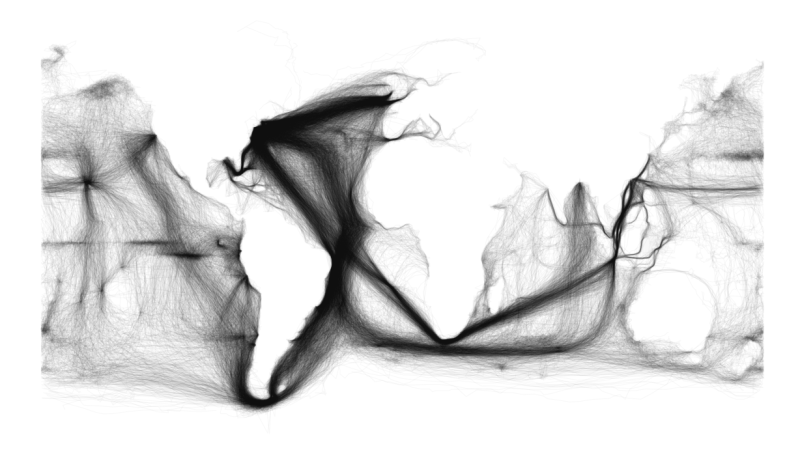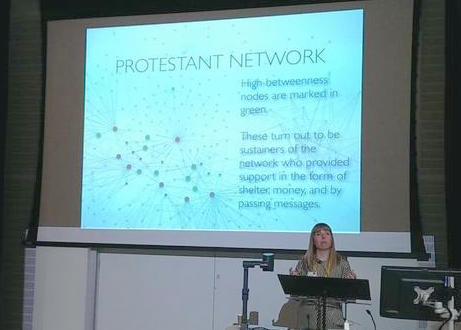It’s the time of year for reflection, and boy what a year 2020 has been. To be honest I don’t think I have processed it all – not yet anyway. So, I thought I try to share a few thoughts inspired by bananas! Yes, dear reader, that’s not one of my many typos, I do mean bananas.
Last week I got a little, personalised infographic from Marks and Spencers giving me a view of my spending habits over the past year. To my surprise I was the 3 top buyer of bananas in my local M&S foodstore.

As I commented on Facebook, this was possibly the most useless bit of data ever. Oh how we all laughed! Making it to the top 3 banana buyer caused much hilarity and possibly my most popular and engaged (yes there were lots of comments not just likes and emjois) FB post of the year. I am still waiting for my end of year FB roundup – bet that will be a beauty too.
But the bananas did get me thinking and reflecting on data, numbers, customer profiling and personalisation. All key themes of 2020.
This year has been dominated by numbers. Shockingly high numbers of deaths due to COVID-19 – a series of blog post I wrote during lockdown all started with the ever increasing official UK death toll; ever increasing numbers of people made redundant due to the impacts of lock down, the profits some companies are still making, the ever increasing numbers of children in poverty, ever increasingly eye wateringly high numbers of personal wealth of the worlds billionaires, the increasing cost of Brexit, the increasing number of unelected (and at times slightly dodgy) Peers.
The divisions between the haves and have nots has become more acute and sadly the gulf seems to be getting greater. It’s all in the numbers . . .
But back to the bananas. I remember, back in the day when “learning analytics” was still just a slightly odd word combination, going to an event in Oxford where some “angel investors”, govt peeps and a few weirdos like me were invited to discuss how to save and share data (educational mainly). Some of you might remember the phrase “data lockers”. Anyway, it’s all a bit of a blur now really, but I do always remember Tony Hirst (the man who helped me really understand the power of data) commenting at the time about the lack of anyone from retail being there. I’m sure he said something along the lines of Tesco know more about us all than the government will ever do and they never share “their” data.
That’s always stuck with me – even as I swipe my Tesco clubcard, and various other ‘customer rewards cards’. Tesco are very clever about regularly sending me money off vouchers, that’s a trade off I can live with as they don’t share that data – it’s worth too much to them. However, the bananas and the infographic have got me thinking again about data manipulation, and personalisation.
At this point I need to to give a bit of context to the bananas. I like a banana as much as anyone else who likes them. I don’t eat or buy (so I thought ) an excessive amount of them. So to be in a top three buyer category did surprise me. Even more so as I don’t actually do that much food shopping in Marks and Spencers. If I had access to all my data I’m sure other non fruit food items and would top my banana purchasing – but back to that in a minute.
However, during lockdown, and particularly at the start of lockdown, I was finding it hard to get fresh fruit at my regular supermarket, but my local M&S was the exception so I did do more fruit shopping there than normal. As panic buying died down (only to reappear now!) and stocks became more plentiful, my fruit buying at M&S declined – the naughty stuff probably stayed the same, but I can’t be sure as I can’t access that data.
Now obviously M&S want to promote themselves as a “healthy” option, and appeal not only to my (completely non) competitive nature, by rewarding me with positive news about my shopping habits. Being more than content with a “bronze medal” as someone put it, I really have no intention of trying to improve that rating – or spend any more money on bananas. But I am very curious now about the data (aka my data) that M&S hold, how the decisions around what to share with me about my apparent preferences, and inferred lifestyle choices were made.
I’m pretty sure my M&S dashboard has a whole series of other views that it could have shared. And that got me thinking about how data can, and is, manipulated to provide a seemingly ‘personalised’ view of “stuff”. A view that is not actually centred on helping me maintain a healthy, balanced diet and lifestyle but is actually all about getting me to spend more money in a retail outlet. And that brought me back to education, and data, and personalisation.
So many ed tech companies are selling ‘the dream’ of personalisation through their data platforms – but is it really personalisation? Or is it just a thin veil of a ‘user first name’ being placed in certain pages, some choice of colour options, in a “personalised’ way to another 3 and half million “users’ of homogenised content and quizzes? What/where is the wider context of the “user” (aka learner ) data being used?
There have been too many people this year to mention in this post who raise these questions in a far more informed and nuanced way, in particular Ben Williamson for keeping a constant track of ed tech investment and “innovation” and Audrey Watters for her continued role as the Cassandra of Ed Tech, and in particular the rise of surveillance in education. These methods of track and trace I approve of!
Which brings me back, not quite to the bananas, but to more numbers, data, and notions of data surveillance that the COVID 19 pandemic has raised. Again like many, I was quite skeptical of the original track and trace app the UK government had planned. One step closer to a dystopian Big Brother State loomed . . . but that hasn’t quite happened, and afaik the track and track app is quite safe to use.
But in the same way I have become accustomed/ accepted/ complied (not quite sure what the right word is here so you can choose which one you think best fits) to retail consumer profiling and trade offs, I am slightly worried by some internal conversations I am having.
Would I trade a “little bit” of surveillance in terms of data about for example being COVID tested, about when (with a big IF caveat here) I get vaccinated, to be allowed to do a little bit more for example, be able to visit friends and family who live in a different part of the country/ the world, have people in my house? Is a bit of data about my health going to be price of freedom in 2021? And who will own that data? What inferences will be made from that data? Possibly a bit much for this almost top banana to figure out. Perhaps I need to work this out in a speculative data story?
In the meantime I wish you a very Merry Christmas and a hopefully brighter 2021.



